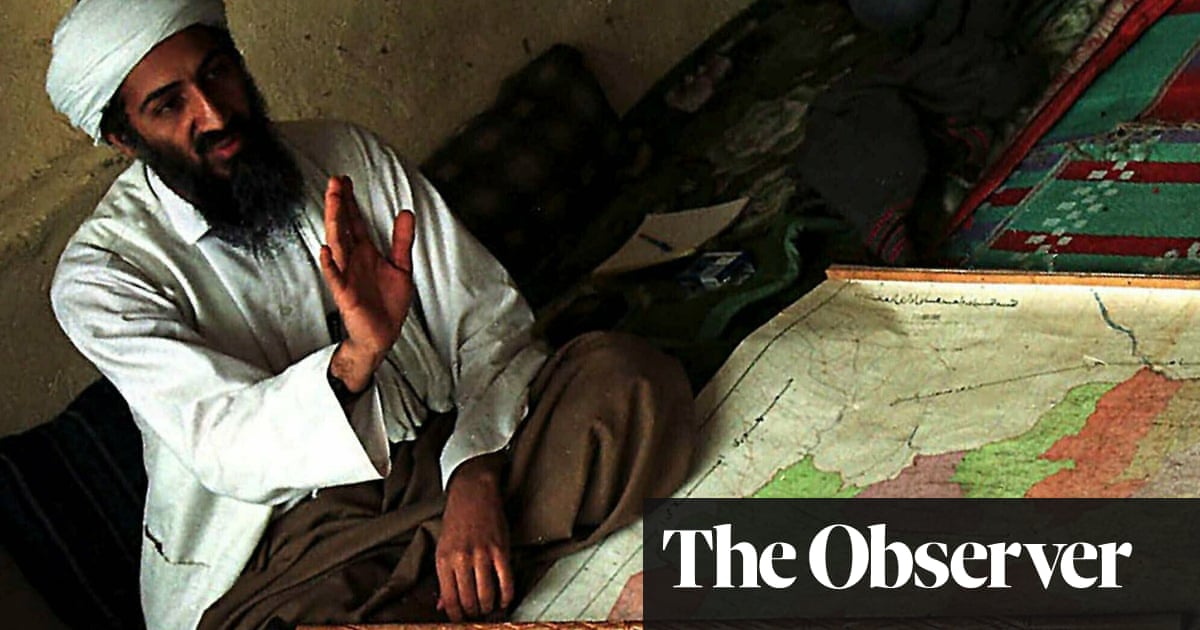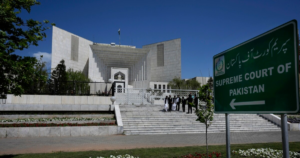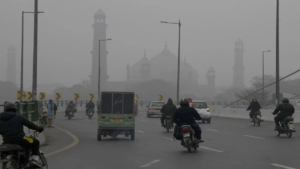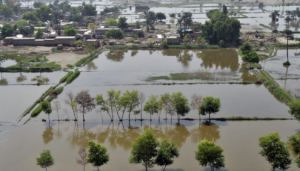
Show caption Global ambitions: Bin Laden in Afghanistan in 1998. Photograph: AP Biography books The Rise and Fall of Osama bin Laden review – how the son of a brickie became the leader of al-Qaida Peter Bergen’s thoroughly researched biography of the notorious Islamist reveals his strikingly mundane, human side Jason Burke Mon 6 Sep 2021 11.00 BST Share on Facebook
Share on Twitter
Share via Email
Just over 10 years ago, US special forces killed Osama bin Laden in the house in northern Pakistan where he had been living for several years. The successful operation ended the biggest manhunt in history and is the penultimate chapter of this fine, rigorous and riveting account of the life of the founder of al-Qaida and the mastermind of the 9/11 attacks of 2001.
Peter Bergen was among the first journalists to understand the threat Islamist extremism posed and has since written a series of books on the topic, as well as the US reaction to it. He draws on a wealth of first-hand reporting over 25 years, hundreds of interviews and thousands of documents for this new work. Among the last is new material scooped up during the raid that killed Bin Laden, which has only recently been released.
This allows Bergen to describe the family life of Bin Laden in intimate detail. Much we already know, but there is still a wealth of fresh insights. A journal put together by the sprawling Bin Laden family in Abbottabad – 27 people, including wives, children and grandchildren – allows us a glimpse of the leader of al-Qaida as he ponders how he should react to the Arab spring uprisings. We learn of the fugitive’s tears at the bereavement of a close associate, paternal advice on how to avoid being tracked by satellites, husbandly concerns for several wives – a bizarre mix of affection and extreme asceticism. The Bin Laden children never tasted chocolate and were once led by their father on long hikes through deserts with limited water to toughen them for “the struggle to come”.
Bergen makes the very good point that 9/11 was a short-term disaster for the group
But The Rise and Fall of Osama bin Laden does much more than reveal a human side to a mass murderer, offering the general reader an authoritative and convincing portrait of a man whose misdeeds changed all our lives in many ways, none for the better. One obvious reason that no one will be writing books like this about Abu Bakr al-Baghdadi, the Islamic State leader killed by US special forces in Syria, is that his life story is not particularly gripping. The riches to rags radicalisation of Bin Laden is undeniably compelling.
Bergen starts with Bin Laden’s childhood in Saudi Arabia. He was the son of a low-status temporary wife of an extremely rich and very devout immigrant brickie turned construction magnate. From his early teens, Bin Laden, timid and ill at ease, was seeking to live his life according to the most demanding strictures of the puritanical strand of Islam practised in the kingdom.
Subsequent chapters take us through Bin Laden’s tentative early engagement in activism in Afghanistan, the transformative effect of his first experience of combat against Soviet occupiers, the foundation of al-Qaida as a brigade of committed Islamist fighters ready to deploy anywhere in the world, his stay in Sudan and then the return to Afghanistan, where he would plan the spectacular and devastating 9/11 attacks. Here, Bergen makes the very good point that this operation was a short-term disaster for the group, leading to the loss of its vital haven, the death of hundreds of fighters and to a life on the run for its leaders. What saved al-Qaida was the 2003 invasion of Iraq, which did not just divert attention and resources but gave the global movement of Islamist militancy a tremendous boost.
Bergen angrily demolishes the lies that underpinned US policy under the Bush administration and for which few, if any, have ever been held accountable. Having spoken to many of the former CIA officials involved in compiling successive intelligence in 2002 and early 2003 that found no link between Bin Laden and Iraq, Bergen is well placed to nail that particular falsehood. This is important given that one reason given by the White House for military action to oust Saddam Hussein was that his regime was somehow complicit in 9/11 (along with having weapons of mass destruction). But he also shows other myths for what they are. No, Bin Laden and al-Qaida did not receive US funding or training in the 1980s. No, torture in CIA “black sites” of al-Qaida suspects did not elicit the intelligence that led to the discovery of Bin Laden’s bolthole. No, the Pakistanis did not shelter the al-Qaida leader for a decade for their own dastardly purposes. Though all of this has been said before, it is still important to say it all again and refute dangerous, ideological fantasy with solid research and reporting.
Bergen does not dwell on the broader dynamics of the modern violent Islamist extremist movement and could perhaps have allowed himself a few more pages to flesh out some context, but does dive into this immensely complex field where it is relevant to Bin Laden’s transformation from devout but purposeless youth into the very focused, if often wayward, leader of later. At university, he was influenced by Egyptian Islamists from a radical fringe of the Muslim Brotherhood organisation, for example.
This is a biography and so can be read as a story of an individual’s radicalisation. Is there one single crucial factor or a particular moment when Bin Laden went bad? Of course not. He killed several thousand people and sparked conflicts that cost the lives of hundreds of thousands more but as the family details of squabbles and fears and hopes show, he was an ordinary man.
• The Rise and Fall of Osama bin Laden by Peter Bergen is published by Simon & Schuster (£30). To support the Guardian and Observer order your copy at guardianbookshop.com. Delivery charges may apply








